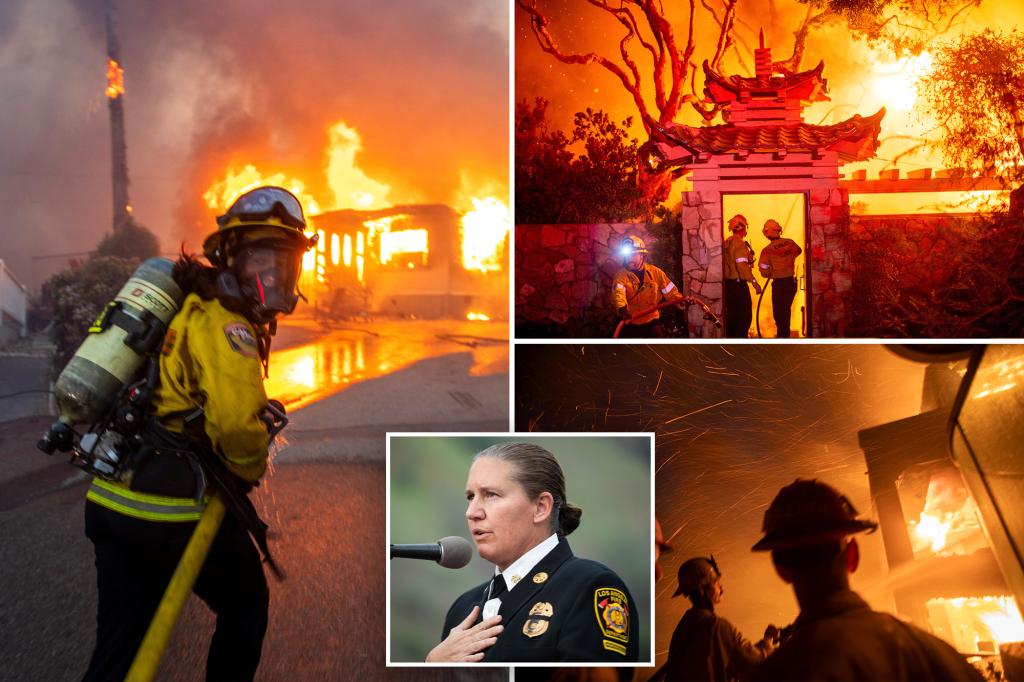The Los Angeles Fire Department (LAFD) is facing intense scrutiny following revelations about its response to the devastating Palisades Fire. Internal records obtained by the Los Angeles Times paint a picture of delayed deployment of crucial resources, despite clear warnings of extreme fire danger. As the fire raged, consuming homes and claiming lives, a thousand firefighters and over forty water-carrying engines remained undeployed. This inaction occurred even as forecasts predicted life-threatening winds, conditions ripe for the rapid spread of wildfire. The LAFD’s decision to hold back these resources, particularly the additional fire crews who could have extended their shifts, has fueled criticism and raised serious questions about the department’s preparedness and tactical decision-making. Experts and former fire officials have argued that a more aggressive initial response could have significantly curtailed the fire’s destructive path.
The LAFD’s pre-positioning strategy also appears to have been flawed. While nine engines were stationed in the San Fernando Valley and Hollywood areas, none were deployed to the Palisades region, the very location where the fire ultimately erupted. This lack of foresight meant that when the fire ignited, the response was delayed, allowing the flames to gain a foothold and rapidly spread. By the time additional manpower and equipment were dispatched to the Palisades, the fire had already spiraled out of control, rendering the belated reinforcements less effective. Critics contend that this reactive approach, rather than a proactive one, contributed significantly to the fire’s devastating impact. The department’s decision to staff only five of the available forty-plus fire engines further exacerbates concerns about inadequate resource allocation.
Former LAFD Battalion Chief Rick Crawford, now in charge of emergency and crisis management for the US Capitol, strongly condemned the department’s actions, describing them as a “domino effect of missteps.” He emphasized the importance of deploying available resources preemptively, especially when faced with extreme fire conditions. Crawford argued that a robust initial attack would have offered the best chance of minimizing the fire’s spread. He pointedly noted that the LAFD implemented the very strategy it should have employed proactively only after the fire had already taken hold, a tactical error that likely magnified the disaster. Crawford’s critique highlights the stark contrast between the department’s delayed response and the aggressive, preemptive approach he believes was necessary.
LAFD Deputy Chief Richard Fields, who oversaw staffing and equipment deployment prior to the fire, defended the department’s decisions. He maintained that the plan was “appropriate for immediate response” and dismissed criticisms as “Monday-morning quarterbacking.” Fields emphasized the need to balance resources across the entire city, suggesting that deploying additional resources to the Palisades preemptively would have left other areas vulnerable. His defense rests on the argument that the department had to manage its limited resources strategically, considering the needs of the entire city, not just a single area. However, this argument fails to address the critical importance of pre-positioning assets in areas facing the highest risk, particularly when those risks are clearly identified through weather forecasts and fire danger warnings.
Fire Chief Kristin Crowley echoed Fields’ defense, stating that the department’s strategy was sound given the limited resources and the increased demand for emergency services that day, with 911 calls double the usual volume. She maintained that the department must prioritize and allocate resources strategically across the city, implying that preemptively deploying significant resources to the Palisades would have compromised their ability to respond to other emergencies. However, this explanation does not fully account for the severity of the fire warnings and the predictable nature of the heightened risk in the Palisades area.
Adding another layer of complexity to the situation, LAFD officials have partially attributed their hampered response to recent budget cuts. Los Angeles Mayor Karen Bass had slashed $17.6 million from the department’s budget prior to the fires. This revelation has sparked debate about the adequacy of funding for essential fire services, particularly in light of increasing fire risks due to climate change. Furthermore, firefighters on the ground reported difficulties battling the flames due to low water pressure and dry hydrants, highlighting potential infrastructure issues that exacerbated the crisis. The empty Santa Ynez Reservoir, undergoing repairs during the fire, further underscores the challenges faced by firefighters. The confluence of budget cuts, infrastructure problems, and the delayed deployment of resources raises serious concerns about the city’s overall preparedness for such events.

